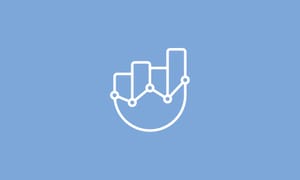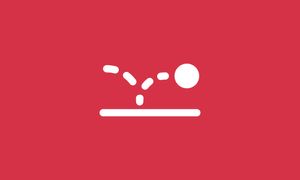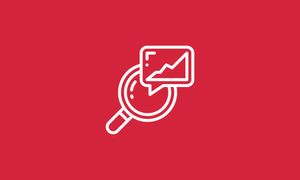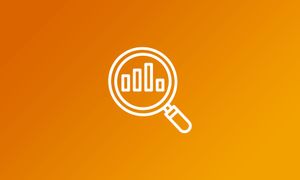Conversion rates are one of the most significant factors to the success of your eCommerce site and are usually the most overlooked. Analysing your conversion rates is simple, but taking the time to improve them can be challenging, especially those who don’t have much experience. Ignoring conversion rates and not participating in Conversion Rate Optimization (CRO) can negatively affect your website and your profits. In this article, we’ll be looking at the five most common risks associated with a lack of CRO, and what you can do to avoid them.
This post does not tell you how to improve your eCommerce conversion rates.
The purpose of this post is not to tell you how to improve your eCommerce conversion rates. It is to tell you why you should monitor your conversion rates so you can then try to improve your conversion rates. If you want to learn how to improve your CR, check out this article I wrote on Search Engine People.
1. You might not get the chance to improve the quality of your visitors
Your website needs to attract high quality visitors that are the best fit for your business and products. To do this, you need to focus on your marketing and optimize the correct, specific keywords for your target audience. If you use and optimise broad keywords, the total traffic may rise, but your total conversions will drop because you’ve hooked a larger spectrum of visitors, not all of whom need or want your specific services. Furthermore, if you try to improve your traffic from a specific keyword, your conversion rate will also rise. If you choose not to track your conversion rates for specific pages, you might not realize if a page performs poorly.
2. You might not have the correct landing pages
By using Search Query Referrals to see which keywords have the highest conversion rates, you can also determine what pages visitors are landing on when they search for specific phrases. If they’re landing on a page that isn’t optimized properly, the visitors will leave before taking any additional steps to navigate your site. If your keywords are directing the visitor to the “About” page instead of your primary landing page, there is a major optimization flaw. Each landing page needs to be a part of the Conversion Funnel, and it also needs to direct the visitor to your specific call to action (CTA). By focusing on a simpler navigation, an easy conversion funnel, and optimizing each landing page, you can increase your conversion rates. If you don’t use a CMS for your website, you could always try driving traffic to a custom landing page using a tool like this.
3. You’re not reducing bounce and exit rates
High bounce and exit rates should throw up red flags immediately. A Bounce Rate is the amount of visitors who exit your site after only viewing a single page. An Exit Rate is the percentage of people who leave after viewing your page, and this rate is specific to each page. A high exit rate on a specific page is telling, and if you don’t focus on CRO for that page, you’re going to continue losing traffic. If you’re not tracking conversion rates in addition to bounce and exit rates, you’re not going to know which page or what content is causing visitors to leave your site.
By using A/B testing, you can determine which pieces of content need to be changed and optimized in order to enhance your conversion. A/B testing simply tests your current page against a new version to see if the changes make any significant increase or decrease in conversion, so you know what works and what doesn’t.
4. You’re not creating the best possible user experience
Your site needs to be easy to use, streamlined, and accessible in order to boost conversions. By tracking conversion rates and focusing on CRO, you can create the best possible experience for your customers and increase your turnover. To do this, you need to ask yourself some questions. First, is your page relevant? Is there an obvious call to action? Are there too few or too many CTA’s? Are there too many links and ineffective images cluttering up your pages? Is your checkout process streamlined or is it cumbersome? Is it visually enticing, or is it boring?
One area which eCommerce stores tend to neglect is the search functionality. Getting search right can make a huge difference to the revenue you generate and the ROI from your marketing spend. Also hiring an online store management company can really help your company, check it out here.
Each of these questions can be addressed and fixed by implementing and tracking A/B test results, as we mentioned earlier. Take this testing one step at a time, because changing too much at once can give you mixed results. For example, if you switch from short form copy to long form and change your headline, you won’t be sure which of those affected your conversion rates the most.
5. You’re wasting money and losing valuable customers
This is the most obvious and important risk factor when you don’t focus on Conversion Rate Optimization, and it is intrinsically tied to the all of the above risks as a direct effect. If your website is not converting traffic into customers, you’re losing money, plain and simple.
One of the most common mistakes eCommerce site owners can make is to sink large amounts of money into Pay Per Click advertisements and SEO without taking the time to focus on conversion rates. By doing this, you effectively spend more effort on gaining large amounts of traffic and trying to rake in new customers instead of cultivating a lasting and trusting relationship with the customers you really want. Because CRO is essentially free and only requires time, you’ll get significantly more return on your investment, and it all goes to the bottom line of your business. If you want to be a trusted authority and a valuable eCommerce site, you need to focus on CRO.






